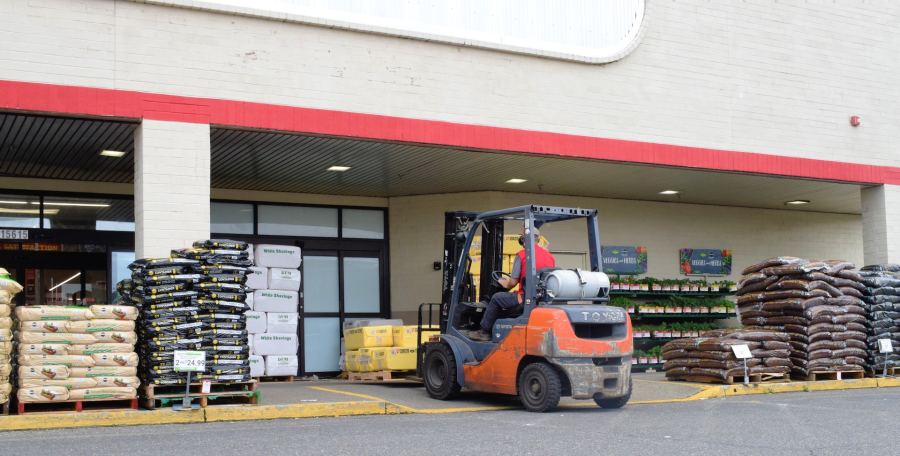One of the most significant, complex and controversial changes under the Federal Government's Fair Work Legislation Amendment (Closing Loopholes) Bill 2023 (Bill) concerns major structural reforms to the Fair Work Act 2009 (Cth) (FW Act) in regulating third-party workforce arrangements.
Described as 'closing the labour-hire loophole', the proposed changes have links to the Federal Government's proposed 'Same Job, Same Pay' reforms whereby workers who perform the same job alongside each other receive the same pay.
Under these changes, the Fair Work Commission (FWC) can make Regulated Labour Hire Arrangement Orders (RLHAOs) that govern worker pay arrangements between employers who supply employees to perform work for a 'regulated host', those employees, and the 'regulated host' i.e., the procurer of this worker supply.
In this update, explore:
- the making of RLHAOs and how you could be covered;
- the effect of RLHAOs and the protected rate of pay, and what happens if you are covered;
- exceptions and exclusions for RLHAOs, and when they don't apply;
- other matters; and
- implications for employers and hosts
The making of RLHAOs and how you could you be covered
The FWC (including via an application by relevant union/s) must make RLHAOs, binding relevant employers, their employees, and regulated hosts, where it is satisfied that:
- the employer supplies / will supply employee(s) to the regulated host to perform work for the regulated host; and
- a covered employment instrument e.g., an enterprise agreement, applies to the regulated host, and would apply to the supplied employee(s) if they were instead directly employed by the regulated host. This is referred to as the host employment instrument; and
- the regulated host is not a small business employer (as defined in the FW Act) - although the employer supplying the employees can be a small business employer under a RLHAO.
Diagram
The following diagram illustrates the relationship under which RLHAOs are made:

There are some exclusions and exemptions for RLHAOs, which are explored further below. Also, RLHAOs may not come into force before 1 November 2024.
The effect of RLHAOs and the protected rate of pay, and what happens if you are covered
If the FWC makes RLHAOs over a third-party workforce arrangement, then:
- the employer in that arrangement (i.e., the supplier of the employee/s to the regulated host) must pay those employee/s (i.e., the regulated employees) at least the 'protected rate of pay' in respect of the work they are performing for the regulated host. The protected rate of pay is the full rate of pay (including pay rates; incentive based payments and bonuses; loadings; monetary allowances; overtime or penalty rates; and any other separately identifiable amounts) that the regulated employees would receive if the host employment instrument (e.g., enterprise agreement) of the regulated host applied to them. However, there are protections for these employers where they reasonably rely on incorrect information from the regulated host about calculating the protected rate of pay.
- the regulated host in that arrangement (i.e., the procurer of the supplied employees) must comply with requests for information from the employer, so that the employer can apply the protected rate of pay requirements for its regulated employees (e.g., details about the host employment instrument, and systems the regulated host may use in implementing this instrument in respect of its employees). Alternatively, the regulated host could effectively administer payroll arrangements for the regulated employees themselves, by advising the protected rate of pay applicable in each pay period.
Failure to comply with these requirements by employers and regulated hosts will amount to a breach of the FW Act, and civil penalties may apply.
It's also important to note that:
- There are no 'jump downs' under RLHAOs. For example, the protected rate of pay only applies to regulated employees if it is higher than the rate of pay those employee/s would have received under their arrangements with their employer (otherwise the employee/s usual employment arrangements will apply).
- The nature of the regulated employees' engagement is irrelevant to RLHAOs (e.g., whether they are employed on a full-time, part-time or casual basis). For example, if the regulated employees are casuals, and the host employment instrument does not provide for casual employment, a protected rate of pay may still be applied, which will be drawn from the host employment instrument, plus a 25% casual loading.
- There doesn’t need to be any actual comparator employees engaged by the regulated host under the host employment instrument for RLHAOs to apply.
Exceptions and exclusions for RLHAOs, and when they don't apply
Not "fair and reasonable" to make RLHAOs
The FWC must not make RLHAOs covering employers, their regulated employees, and regulated hosts, where it is satisfied that it would not be "fair and reasonable" in all the circumstances to do so.
To determine this, the FWC will consider:
- the pay arrangements of employees of the regulated host, and the nature of the host employment instrument;
- whether the relevant work performed is for the provision of a service rather than a supply of labour (e.g., is this a labour hire arrangement, or a specialist service provided by a third party where the employer maintains supervision and control over the regulated employees);
- the history of industrial arrangements applying to the regulated host and the employer;
- the level of connection between the employer and the regulated host (e.g., are they related companies, or in joint venture together); and
- the nature of the relevant work arrangement (e.g., the duration and location of the work, the industry of the regulated host and employer, and the number of employees being supplied).
The Explanatory Memorandum to the Bill states that these changes do "not intend to regulate contracting for specialised services". On this basis, those engaging in third-party workforce arrangements may have better prospects of resisting the making of RLHAOs where they can demonstrate the relevant relationship involves the provision of specialist expert services, as opposed to labour hire that is under the control of the regulated host. However, the application of the above criteria by the FWC will be key.
Certain short-term arrangements
Even where there are relevant RLHAOs in place, the protected rate of pay requirements for regulated employees may not apply in the following circumstances:
- Where regulated employees are engaged under training arrangements (e.g., apprenticeships); or
- The regulated employees' engagement is for no longer than three months (but the FWC has the power to remove this exclusion); or
- The FWC has issued an exemption from these requirements, which may be shorter or longer than a three-month period, and could also recur from year to year - e.g., to cover a Christmas shopping period, or a snow season. For such exemptions, the FWC would need to be satisfied that exceptional circumstances apply, having regard to, for example, the seasonal or short-term need for workers, the relevant industry, the circumstances of the regulated host and the employer, as well as the principle that, the longer the exemption period, the greater the justification required to issue it.
Other matters
Under these changes, the FWC will also have power to make alternative protected rate of pay orders (e.g., if the relevant protected rate of pay under the host employment instrument is excessive or insufficient), as well as arbitrate disputes between parties about the protected rate of pay under RLHAOs and, in this scenario, can issue binding arbitrated protected rate of pay orders.
The FWC may also issue written guidelines as to the operation of these changes.
Robust anti-avoidance provisions have also been included in these changes, to cover off parties seeking to establish and implement arrangements aimed at preventing the making of RLHAOs, or utilising exclusions (e.g., short-term arrangements) for a purpose of avoiding these new requirements. For example, setting up rolling labour hire arrangements that operate for less than three months, but are recurring so as to avoid these provisions.
Implications for employers and hosts
Clearly, these 'closing the labour hire loophole' changes, if passed by Federal Parliament, will have significant impacts on those who enter into third-party workforce arrangements.
The Federal Government has indicated its desire that these changes pass by the end of this year, and it is likely key crossbenchers in the Senate will be crucial to its passing (with possible amendments). We will be tracking this legislation closely, and providing further updates on developments.
In the meantime, it would be prudent for employers and hosts to consider the following, in preparing for these changes:
- Would my workforce arrangements fall within the FWC criteria in making RLHAOs?
- If so, could I still rely on the criteria to establish that it wouldn’t be 'fair and reasonable' to make RLHAOs?
- If we were bound by RLHAOs, are we equipped to implement processes and systems to ensure applicable protected rates of pay are provided to regulated employees?
- If RLHAOs apply, can we rely on exemptions for short-term arrangements to manage this risk?
For more information about the Fair Work Legislation Amendment (Closing Loopholes) Bill 2023 and how the changes might apply to your organisation, please contact Lander & Rogers' workplace relations and safety legal experts.
Image by Ennif Pendahl on Unsplash.
All information on this site is of a general nature only and is not intended to be relied upon as, nor to be a substitute for, specific legal professional advice. No responsibility for the loss occasioned to any person acting on or refraining from action as a result of any material published can be accepted. Lander & Rogers is furthermore committed to providing legal advice and content that is factual, true, practical and understandable. Learn more about our editorial policy.
 Client portal
Client portal
















